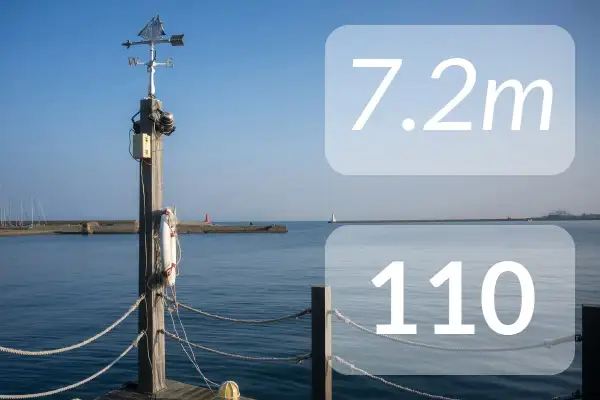110 what?
7.2m where?
As we post this, the tides reach their highest amplitude for this fall 🍂
There’s something quite quirky about it, though. These spring tides are referred to very differently around the world 🌎
Some simply give them a moniker, such as king tides in Australia and New Zealand. That has since spread around the Pacific and onto North America.
Scientifically speaking, they’re called perigean spring tides, because they are the result of a spring tide (when Earth, Moon and Sun are aligned) happening when the Moon is at its closest to Earth (the perigee) 🌔
Yet, not all tides are equal, and even not all super tides are equal.

Given the extreme importance of the tides in the English Channel, it’s no surprise that mariners plying its waters have needed to quantify the phenomenon further.
As it turns out, both sides of the Channel came up with different ways of doing so 🤔 How unexpected! 😉
🇬🇧 The practical, British way
Around Great Britain, the port of Dover was chosen as a reference, and its high water as a “gauge” for how large the tide is. The Mean High Water Springs at Dover is 6.7 meters. So high tides on this October 8 and 9 making it to 7.2 meters mean it’s quite a large spring tide.
That being said, one might well wonder: if you’re in Liverpool, where the high tide reaches 10.1 meters these days, isn’t it convoluted to assess these high tides because they reach 7.2 meters in Dover, halfway around the island?
🇫🇷 The more abstract, French method
France went another way, and devised a “tidal coefficient”. It’s a dimensionless number ranging from 20 to 120. Average spring tides correspond to a figure of 95. So, today’s spring tides, predicted to be 110, are quite large.
Note: Mathematically speaking both approaches are (thankfully) equivalent. The only difference being that the coefficient is calculated for another reference port: Brest. There might be very minor discrepancies because of this.
Yet, again, here’s food for thought: to the uninitiated, a random dimensionless number might feel just as cryptic as talking of water height in a completely different place, doesn’t it?
❓ If you’re not from France, what do you use to make sense of how large a tide is? To your eyes, would a dimensionless number be more helpful than a water height? And if you’re French, did you know that other countries don’t use the “tidal coefficient”?
